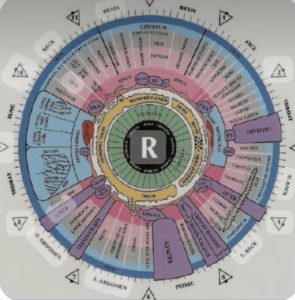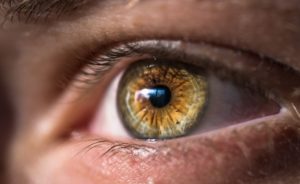How To Treat Constipation Using Iridology
Iridology is a non invasive method of uncovering potential health conditions, even before the symptoms arise. This is done by examining the coloured area of the eye, known as the iris. Iridology has been practiced in various forms for many hundreds of years. It was initially practiced using a magnifying glass and torch, which some practitioners still use to date.
 Modern Iridology cameras have since been developed, enabling digital photos to be taken. This is useful as it enables both the Practitioner and the Patient to see the photos and understand better the Iridology Findings.
Modern Iridology cameras have since been developed, enabling digital photos to be taken. This is useful as it enables both the Practitioner and the Patient to see the photos and understand better the Iridology Findings.
Digital Iridology photos also saves the Practitioner time and effort trying to describe and explain what has been seen and enables a record to be kept so that these photos can be compared with future photos to monitor the progress or deterioration in the specific organ. Necessary steps can then be taken to amend recommendations as required.
Constipation is when you find it hard to expel stool or you expel it less often than the main meals you eat daily. Symptoms of constipation include not expelling stool comfortably every day. It can be treated by increasing your fibre intake daily, such as eating more fruits and vegetables, drinking sufficient fluids and being active. Constipation can affect people of all ages, including babies and younger children.
Signs and symptoms of constipation include straining to have bowel movements, feeling as though there is a blockage in your rectum that prevents bowel movements and feeling as though you cannot completely empty the stool from your rectum.
Watch and learn from our short video re How To Treat Constipation Using Iridology.
 Iridology charts such as the example shown on the right are used by Iridologists to make observations to various organs including the digestive system. The Iridology charts have been created after observation of a variety of irises over the years. The Iridology Charts divides the iris into zones that represent certain parts of the body.
Iridology charts such as the example shown on the right are used by Iridologists to make observations to various organs including the digestive system. The Iridology charts have been created after observation of a variety of irises over the years. The Iridology Charts divides the iris into zones that represent certain parts of the body.
Each marking and zone in the iris represents a different aspect or organ of the human body. Iridologists can discover some markers of inflammation and toxicity in certain specific areas. For example, the orange ring in the Right Eye Iridology Chart indicates the Digestive System, in particular the Ascending and Transverse Colon.
The main use of Iridology is to detect main weaknesses in the body. With early detection, even before any symptoms arise, prompt treatment or lifestyle changes can be made to prevent or reverse the specific weakness in the body’s organs. Most illnesses are caused by issues in the Digestive system, including constipation.
Digestive Issues
Problems with the digestive system, in particular, the stomach and intestines can present themselves via discolorations around the pupil. Different darker tones in the iris, especially just outside the pupil indicates a toxic digestive system. This could be caused by constipation and constant intake of junk and processed foods. Depending on the location of the darker tones, this could indicate blockages in the ascending, transverse, descending and/or sigmoid colon. The spokes seen in the iris photo on the right indicates toxicity that are affecting almost every part of the person’s body.
Using Iridology, the severity of toxicity or blockages in the digestive system, resulting in constipation can be measured. The patient can then be advised on how much more fibre intake is required daily. When you visit a Wellness Clinic such as ours or book in for a pre-consultation chat, we can recommend natural fibre from foods and supplements that you can take that has years of proven results.
We do not recommend creating your own fibre mixtures especially from rough insoluble fibres which could cause you to injure your digestive system and anus as too much of the incorrect fibre mixture can either be too harsh or give you diarrhea.
Constipation should not be ignored. If left untreated, the following serious complications may arise and this will affect your overall health in the longer term.
- haemorrhoids or piles
- anal fissure which is a small tear in the lining of your anus,
- fecal impaction, where dry, hard stools collect in the rectum,
- rectal prolapse, when part of the large intestine’s lowest section, the rectum slips outside the muscular opening at the end of the digestive tract, the anus, and
- bowel incontinence which is the leakage of liquid stools
To learn more about How To Treat Constipation Using Iridology, check out our other related blogs:
Iridology Pictures and Meanings
Can You See Illness In Your Eyes?
Can Iridology Detect Heart Problems?
NEXT STEPS
Book in a complimentary 15 minutes Zoom call with us (valued at £99) to enable us to clarify questions you may have on a specific health concern.




